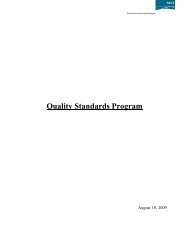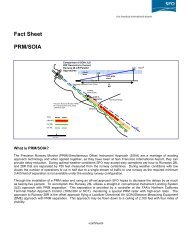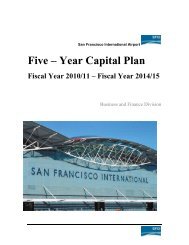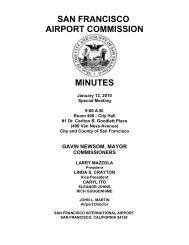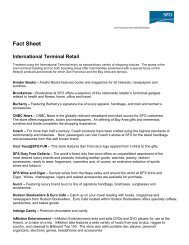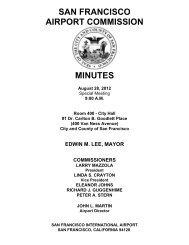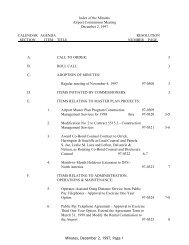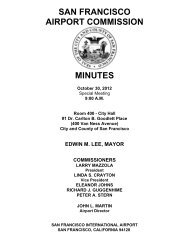Official Statement Airport Commission City and County of San ...
Official Statement Airport Commission City and County of San ...
Official Statement Airport Commission City and County of San ...
Create successful ePaper yourself
Turn your PDF publications into a flip-book with our unique Google optimized e-Paper software.
In addition to revenues received from the airlines, the <strong>Airport</strong> derives a substantial portion <strong>of</strong> its revenues<br />
from concessionaires including parking operators, merch<strong>and</strong>isers, car rental companies, food outlets <strong>and</strong> others. See<br />
“AIRPORT FINANCIAL AND RELATED INFORMATION–Concessions.” Declines in <strong>Airport</strong> passenger traffic have, <strong>and</strong><br />
may in the future, adversely affect the commercial operations <strong>of</strong> many <strong>of</strong> such concessionaires. Severe financial<br />
difficulties affecting a concessionaire could lead to a failure to pay rent due under its lease agreement with the<br />
<strong>Airport</strong> or could lead to the cessation <strong>of</strong> operations <strong>of</strong> such concessionaire.<br />
The ability <strong>of</strong> the <strong>Airport</strong> to derive revenues from its operations depends in part upon the financial health <strong>of</strong><br />
the airline industry <strong>and</strong> international relations. The financial results <strong>of</strong> the airline industry are subject to substantial<br />
volatility <strong>and</strong> many carriers have had extended periods <strong>of</strong> unpr<strong>of</strong>itability. Additional bankruptcy filings, mergers,<br />
consolidations <strong>and</strong> other major restructuring by airlines are possible. See also “SAN FRANCISCO INTERNATIONAL<br />
AIRPORT–Airline Bankruptcies.”<br />
Bankruptcy<br />
In the event a bankruptcy case is filed with respect to an airline operating at the <strong>Airport</strong>, a bankruptcy court<br />
could determine that the Lease Agreement to which such airline is a party is an executory contract or unexpired<br />
lease pursuant to Section 365 <strong>of</strong> the United States Bankruptcy Code. See “SAN FRANCISCO INTERNATIONAL<br />
AIRPORT–Existing Airline Agreements–Potential Effects <strong>of</strong> an Airline Bankruptcy.” In that event, a trustee in<br />
bankruptcy or the airline as debtor-in-possession might reject the Lease Agreement, in which case the <strong>Commission</strong><br />
would regain control <strong>of</strong> any leased facilities (including gates <strong>and</strong> boarding areas) <strong>and</strong> could lease them to other<br />
airlines. The rejection <strong>of</strong> a Lease Agreement in connection with the bankruptcy <strong>of</strong> an airline operating at the <strong>Airport</strong><br />
may result in the loss <strong>of</strong> Revenues to the <strong>Commission</strong> <strong>and</strong> a resulting increase in the costs per enplaned passenger<br />
for the airlines remaining at the <strong>Airport</strong>. In addition, the <strong>Commission</strong> may be required to repay l<strong>and</strong>ing fees,<br />
terminal rentals <strong>and</strong> other amounts paid by the airline up to 90 days prior to the date <strong>of</strong> the bankruptcy filing. The<br />
<strong>Commission</strong>’s ability to lease such facilities to other airlines may depend on the state <strong>of</strong> the airline industry in<br />
general, on the nature <strong>and</strong> extent <strong>of</strong> the increased capacity at the <strong>Airport</strong> resulting from the departure <strong>of</strong> the bankrupt<br />
airline, <strong>and</strong> on the need for such facilities.<br />
Also, under the United States Bankruptcy Code, any rejection <strong>of</strong> a Lease Agreement could result in a claim<br />
for damages for lease rejection by the <strong>Commission</strong> which claim would rank as that <strong>of</strong> a general unsecured creditor<br />
<strong>of</strong> the airline, in addition to pre-bankruptcy amounts owed. For additional information regarding bankruptcy filings<br />
by airlines operating at the <strong>Airport</strong> see “SAN FRANCISCO INTERNATIONAL AIRPORT–Airline Bankruptcies.”<br />
On January 5, 2010, Mesa Airlines (a U.S. Airlines affiliate) <strong>and</strong> on January 19, 2010, Japan Airlines, each<br />
filed for protection under Chapters 11 <strong>and</strong> 15 <strong>of</strong> the U.S. Bankruptcy Code, respectively. For Fiscal Years 2007-08<br />
<strong>and</strong> 2008-9 each <strong>of</strong> these airlines represented less than 1% <strong>of</strong> total enplanements at the <strong>Airport</strong>. Each <strong>of</strong> Mesa<br />
Airlines <strong>and</strong> Japan Airlines has deposited with the <strong>Commission</strong> a letter <strong>of</strong> credit to secure their performance under<br />
the applicable Lease Agreement. For additional information, see “SAN FRANCISCO INTERNATIONAL AIRPORT–<br />
Existing Airline Agreements–Potential Effects <strong>of</strong> an Airline Bankruptcy–Japan Airlines” <strong>and</strong> “–Mesa Air Lines.”<br />
Since the bankruptcy filings, both Japan Airlines <strong>and</strong> Mesa have continued to operate at the <strong>Airport</strong>.<br />
For a discussion <strong>of</strong> the effects <strong>of</strong> an airline bankruptcy on the collection <strong>of</strong> the passenger facility charge,<br />
see “AIRPORT’S FINANCIAL AND RELATED INFORMATION–Passenger Facility Charge–Collection <strong>of</strong> PFCs in the<br />
Event <strong>of</strong> Bankruptcy.”<br />
<strong>Airport</strong> Security<br />
The September 11, 2001 terrorist attacks resulted in increased safety <strong>and</strong> security measures at the <strong>Airport</strong><br />
m<strong>and</strong>ated by the Aviation <strong>and</strong> Transportation Security Act passed by the U.S. Congress in November 2001 <strong>and</strong> by<br />
directives <strong>of</strong> the Federal Aviation Administration. In addition, certain safety <strong>and</strong> security operations at the <strong>Airport</strong><br />
have been assumed by the Transportation Security Administration. In spite <strong>of</strong> the increased security measures, there<br />
is no assurance that there will not be additional acts <strong>of</strong> terrorism, such as the attempted December 25, 2009 terror<br />
plot, resulting in further disruption to the North American air traffic system, increased passenger <strong>and</strong> flight delays,<br />
<strong>and</strong> reductions in <strong>Airport</strong> passenger traffic <strong>and</strong>/or <strong>Airport</strong> revenues. See “SAN FRANCISCO INTERNATIONAL<br />
AIRPORT–<strong>Airport</strong> Security.”<br />
28



